- Home
- Carl Sagan
Broca's Brain Page 27
Broca's Brain Read online
Page 27
Much stranger possibilities are now practical. The Earth turns on its axis once every twenty-four hours. The circumference of the Earth is 25,000 miles. Thus, if we were able to travel at 25,000/24 = 1,040 miles per hour, we could just compensate for the Earth’s rotation, and traveling westward at sunset, could maintain ourselves at sunset for the entire journey even if we circumnavigated the planet. (In fact, such a journey would also maintain us at the same local time as we journey westward from time zone to time zone, until we cross the international dateline and plunge precipitously into tomorrow.) But 1,040 miles per hour is less than twice the speed of sound and there are, worldwide, dozens of kinds of aircraft, chiefly military, that are capable of such speeds.*
Some commercial aircraft, such as the Anglo-French Concorde, have comparable capabilities. The question, I think, is not: Can we go faster? but Do we have to? There has been concern expressed, some of it in my view quite appropriately, about whether the conveniences supersonic transports provide can possibly compensate for their overall cost and their ecological impact.
Most of the demand for high-speed long-distance travel comes from businessmen and government officials who need to have conferences with their opposite numbers in other states or countries. But what is really involved here is not the transportation of material but the transportation of information. I think much of the necessity for high-speed transport could be avoided if the existing communications technology were better used. I have many times participated in government or private meetings in which there were, say, twenty participants, each of whom was paid $500 for transportation and living expenses merely to attend the meeting—the cost of which was therefore $10,000 just to get the participants together. But all the participants ever exchange is information. Video phones, leased telephone lines, and facsimile reproducers to transmit paper copies of notes and diagrams would, I believe, serve as well or even better. There is no significant function of such a meeting—including private discussions among the participants “in the corridor”—that cannot be performed less expensively and at least equally conveniently with communications rather than transportation technology.
There are certainly advances in transportation that seem to me promising and desirable: vertical takeoff and landing (VTOL) aircraft are a remarkable boon for isolated and remote communities in case of medical or other emergencies. But the recent advances in transportation technology that I find most appealing are rubber fins for snorkel and scuba diving and hang gliders. These are technological advances much in the spirit of those sought by Leonardo da Vinci in mankind’s first serious technological pursuit of flight in the fifteenth century; they permit an individual human being with little more than his own resources to enter—at a speed that is adequately exhilarating—another medium entirely.
WITH THE DEPLETION of fossil fuels I think it very likely that automobiles powered by internal-combustion engines will be with us for at most a few decades longer. The transportation of the future will simply have to be different. We can imagine quite comfortable and adequately speedy steam, solar, fuel-cell or electric ground vehicles, generating very little pollution and employing a technology comfortably accessible to the user.
Many responsible medical experts are concerned that we in the West—and increasingly even in developing countries—are becoming too sedentary. Driving an automobile exercises very few muscles. The demise of the automobile surely has many positive aspects when viewed in the long run, one of which is a return to the oldest transportation mechanism, walking, and to bicycling, which is in many ways the most remarkable.
I can easily imagine a healthy and stable future society in which walking and bicycling are the primary means of transportation; with pollution-free low-speed ground cars and railed public transportation systems widely available, and the most sophisticated transportation devices used relatively rarely by the average person. The one application of transportation technology that requires the most sophisticated technology is spaceflight. The returns in immediate practical benefits, scientific knowledge and appealing exploration provided by unmanned spaceflight are very impressive, and I would expect an increasing rate of space-vehicle launches by many nations in the next few decades, using more subtle forms of transportation, as described in the previous chapter. Nuclear electric, solar sailing and ion propulsion schemes have been proposed and are to some degree under development. As nuclear-fusion power plants are developed for Earth-bound applications in a few decades, there should be a development of fusion space engines as well.
The gravitational forces of planets have already been used to give velocities otherwise unobtainable. Mariner 10 reached Mercury only because it flew so close to Venus that Venus’ gravity provided a significant boost in speed. And Pioneer 10 was boosted into an orbit that will carry it out of the solar system entirely, only because of a close passage by the giant planet Jupiter. In a way Pioneer 10 and 11 and Voyager 1 and 2 are our most advanced transportation systems. They are leaving the solar system at a speed of roughly 43,000 miles per hour, carrying messages to anyone who may intercept them out there in the dark of the night sky from the people of the Earth—who, only a little while ago, could travel no faster than a few miles per hour.
* In manned Earth orbital flights, still other problems arise. Consider a religious Muslim or Jew circling the Earth once every ninety minutes. Is he obligated to celebrate the Sabbath every seventh orbit? Spaceflight provides access to environments very different from those in which we and our customs have grown up.
CHAPTER 18
VIA CHERRY TREE,
TO MARS
O for a Muse of fire, that would ascend
The brightest heaven of invention …
WILLIAM SHAKESPEARE,
Henry V, Prologue
IT IS A LAZY afternoon in an exquisite New England autumn. In about ten weeks it will be January 1, 1900, and your diary, into which are committed the events and ideas of your young life, will never again bear an entry with a date in the 1800s. You have just turned seventeen. You are looking forward to being a sophomore in high school, but you are now at home, in part because your mother is seriously ill with tuberculosis and in part because of your own chronic stomach pains. You are bright, with a certain flair for the sciences, but no one has ever indicated that you might have an extraordinary talent. You are complacently viewing the New England countryside from the limb of a tall old cherry tree which you have climbed, when suddenly you are struck by an idea, an overpowering and compelling vision that it might be possible, in fact rather than in fancy, to voyage to the planet Mars.
When you descend from the cherry tree you know that you are a very different boy from the one who climbed it. Your life’s work is clearly set out for you, and for the next forty-five years your dedication never wavers. You have been smitten by the vision of flight to the planets. You are deeply moved and quietly awed by the vision in the cherry tree. The next year, on the anniversary of that vision, you climb the tree again to savor the joy and meaning of the experience; and forever after you make a point in your diary of calling the anniversary of that experience “Anniversary Day”—every October 19 until your death in the middle 1940s, by which time your theoretical insights and practical innovations have solved essentially all technological impediments to interplanetary flight.
Four years after your death a WAC Corporal mounted on the nose of a V-2 is successfully fired to an altitude of 250 miles, for all practical purposes to the threshold of space. All essential design elements of the WAC Corporal and the V-2, and the very concept of the multiple staging of rockets, have been worked out by you. A quarter of a century later, unmanned space vehicles will have been launched to all the planets known to ancient man; a dozen men will have set foot on the Moon; and two exquisitely miniaturized spacecraft named Viking will be on their way to Mars to attempt the first search for life on that planet.
ROBERT H. GODDARD never questioned or equivocated on the resolve he made in the cherry tree on the f
arm of his great-aunt Czarina in Worcester, Massachusetts. While there were others who had comparable visions—notably Konstantin Eduardovich Tsiolkovsky in Russia—Goddard represented a unique combination of visionary dedication and technological brilliance. He studied physics because he needed physics to get to Mars. He was for many years professor of physics and chairman of the physics department at Clark University in his hometown of Worcester.
In reading the notebooks of Robert Goddard, I am struck by how powerful his exploratory and scientific motivations were, and how influential speculative ideas—even erroneous ones—can be on the shaping of the future. In the few years surrounding the turn of the century, Goddard’s interests were profoundly influenced by the idea of life on other worlds. He was intrigued by the claims of W. H. Pickering, of the Harvard College Observatory, that the Moon has a perceptible atmosphere, active volcanism, variable frost patches, and even changing dark markings, which Pickering interpreted variously as the growth of vegetation or even as the migration of enormous insects across the floor of the crater Eratosthenes. Goddard was captivated by the science fiction of H. G. Wells and Garrett P. Serviss, particularly the latter’s Edison’s Conquest of Mars, which, Goddard reported, “gripped my imagination tremendously.” He attended and enjoyed lectures by Percival Lowell, who was an eloquent advocate of the proposition that intelligent beings inhabit the planet Mars. And yet, through all of this, while his imagination was intensely stimulated, Goddard managed to retain a sense of skepticism very rare in young people given to interplanetary epiphanies high up in cherry trees: “The actual conditions may be entirely different … from those which Professor Pickering suggests … The only antidote for fallacies is—in a word—to take nothing for granted.”
On January 2, 1902, we know from Goddard’s notebook, he wrote an essay on “The Habitability of Other Worlds.” The paper had not been found among Goddard’s writings, which seemed to me a great pity, since it might have given us a better understanding of the extent to which the search for extraterrestrial life was a prime motive in Goddard’s lifework.*
In his early postdoctoral years Goddard successfully pursued an experimental verification of his ideas on solid- and liquid-fueled rocket flight. In this endeavor he was supported principally by two men: Charles Greeley Abbott and George Ellery Hale. Abbott was then a young scientist at the Smithsonian Institution, of which he later became secretary, the quaint designation by which the executive officer of that organization is still known. Hale was the driving force behind American observational astronomy at the time; before he died he had founded the Yerkes, Mount Wilson and Mount Palomar observatories, each housing, in its time, the largest telescope in the world.
Both Abbott and Hale were solar physicists, and it seems clear that both had been captured by the young Goddard’s vision of a rocket sailing free above the obscuring blanket of the Earth’s atmosphere, able to view the Sun and stars unimpeded. But Goddard soared far beyond this daring vision. He talked and wrote of experiments on the composition and circulation of the upper atmosphere of the Earth, of performing gammaray and ultraviolet observations of the Sun and stars from above the Earth’s atmosphere. He conceived of a space vehicle passing 1,000 miles above the surface of Mars—by a curious historical accident just the low point in the orbits of the Mariner 9 and Viking spacecraft. Goddard calculated that a reasonably sized telescope at such a vantage point would be able to photograph features tens of meters across on the surface of the Red Planet, which is the resolution of the Viking orbiter cameras. He conceived of slow interstellar flight at velocities and time scales just equivalent to that of the Pioneer 10 and 11 spacecraft, our first interstellar emissaries.
Goddard’s spirit soared higher still. He conceived, not casually but quite seriously, of solar-powered spacecraft, and in a time when any practical application of nuclear energy was publicly ridiculed, nuclear propulsion for spacecraft over vast interstellar distances. Goddard imagined a time in the far distant future when the Sun has grown cold and the solar system become uninhabitable, when manned interstellar spacecraft would be outfitted by our remote descendants, to visit the stars—not merely the nearby stars, but also remote star clusters in the Milky Way Galaxy. He could not imagine relativistic spaceflight and so hypothesized a method of suspended animation of the human crew or—even more imaginative—a means of sending the genetic material of human beings which would automatically, at some very distant time, be allowed to recombine and produce a new generation of people.
“With each expedition,” he wrote, “there should be taken all the knowledge, literature, art (in a condensed form), and description of tools, appliances, and processes, in as condensed, light, and indestructible a form as possible, so that the new civilization could begin where the old ended.” These final speculations, entitled “The Last Migration,” were sealed in an envelope with instructions to be read “only by an optimist.” And that he surely was—not a Pollyanna who chooses to ignore the problems and evils of our times, but rather, a man committed to the improvement of the human condition and the creation of a vast prospect for the future of our species.
Goddard’s dedication to Mars was never far from his mind. In the wake of one of his first experimental successes, he was induced to write a press release on the details of his launch and its ultimate significance. He wished to discuss spacecraft to Mars but was dissuaded on the ground that this was too fantastic. As a compromise he talked about sending a quantity of magnesium flash powder which would make a visible bright flare on the Moon when it landed. This caused a sensation in the press. Goddard was for many years after disparagingly referred to as “the Moon Man,” and he remained rueful about his relations with the press ever after. (An editorial in the New York Times which criticized Goddard for having “forgotten” that a rocket will not work in the vacuum of space because it has nothing to push against may have contributed to his unease. The Times discovered Newton’s third law of motion and retracted its error only in the age of Apollo.) Goddard mused: “From that day, the whole thing was summed up, in the public mind, in the words ‘moon rocket’; and thus it happened that in trying to minimize the sensational side, I had really made more of a stir than if I had discussed transportation to Mars, which would probably have been considered as ridiculous by the press representative and doubtless never mentioned.”
Goddard’s notebooks are not filled with psychological insights. That was not, at least not very much, the spirit of the times in which he lived.* But there is a remark in Goddard’s notebooks that can be only a flash of poignant self-insight: “God pity a one-dream man.” That surely is what Goddard was. He knew great satisfaction in seeing the advances in rocket technology, but it must have been agonizingly slow. There are so many letters from Abbott urging faster progress, and so many responses from Goddard citing practical impediments. Goddard never lived to see the beginning of rocket astronomy and high-altitude meteorology, much less flights to the Moon or planets.
But all these things are happening because of what are very clearly the technological fruits of Goddard’s genius. October 19, 1976, was the 77th Anniversary Day of the Martian vision of Robert H. Goddard. On that day there were two functioning orbiters and two working landers on Mars, the Viking spacecraft whose origins can be traced with utter confidence back to a boy in a cherry tree in a New England autumn in 1899. Among its many other objectives, Viking had the task of checking out the possibility of life on Mars, the prospect that was so powerful a motivation for Goddard so many years before. Curiously, we are still not sure what the Viking biology results mean. Some think that microbial life may have been discovered; others think it unlikely. It is clear that a major program of future exploration of Mars will be required to understand just where in cosmic evolution this neighboring world lies and what its connection is with the state of evolution on our own planet.
From its earliest stages, rocket technology developed because of an interest in life on other worlds. And now that we have landed on Ma
rs, obtained tantalizing and enigmatic biological results, the follow-on missions—roving vehicles and returned sample canisters—in turn require further developments in spacecraft technology, a mutual causality that I think Goddard would have appreciated.
* In a commencement address at Clark University on May 18, 1978, I made some similar remarks. Dorothy Mosakowski in the Rare Book Room at Clark’s Goddard Memorial Library then searched for and found this little essay which had been listed as lost. In it we discover that Goddard was attracted to but cautious about the possibility of life on Mars, certain of the existence of extrasolar planetary systems and deduced “that among these countless planets there are conditions of heat and light equivalent to those we experience; and if this is the case, and the planet is near our age and size, there may very likely exist human beings like ourselves, probably with strange costumes and still stranger manners.” But he also says: “It is for the distant future to answer if we will ever realize truth from our surmises.”
* Although, remarkably, he was in Worcester in the year 1909 when Sigmund Freud and Carl Gustav Jung gave the first comprehensive discussion in the English language of those institutionalized insights called psychoanalysis. Many American psychiatrists got their first glimpses of the subject from Freud’s Clark University lectures. One wonders if the middle-aged bearded Viennese physician and the young mustachioed American physics graduate student nodded to each other in passing on the Clark University campus, on their way to their separate destinies.

 Cosmos
Cosmos Murmurs of Earth
Murmurs of Earth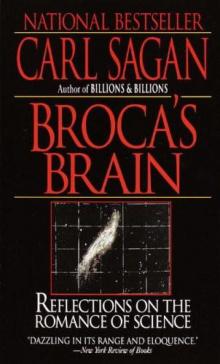 Broca's Brain
Broca's Brain Comet
Comet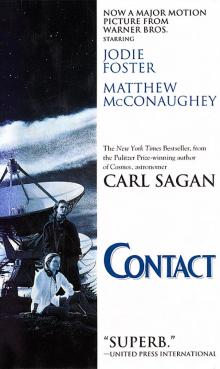 Contact
Contact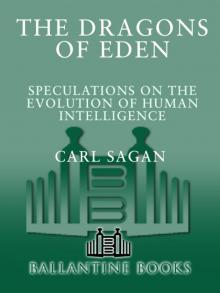 Dragons of Eden
Dragons of Eden Cosmic Connection
Cosmic Connection Shadows of Forgotten Ancestors
Shadows of Forgotten Ancestors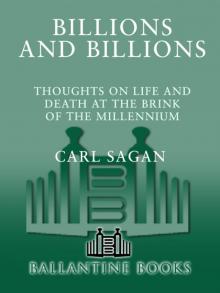 Billions & Billions
Billions & Billions Comet, Revised
Comet, Revised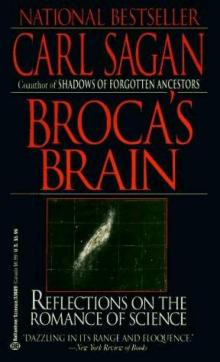 Broca's Brain: The Romance of Science
Broca's Brain: The Romance of Science The Varieties of Scientific Experience: A Personal View of the Search for God
The Varieties of Scientific Experience: A Personal View of the Search for God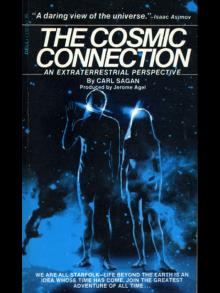 The Cosmic Connection
The Cosmic Connection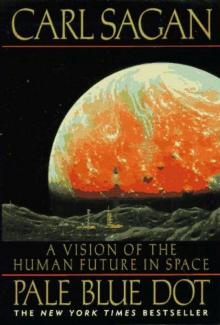 Pale Blue Dot: A Vision of the Human Future in Space
Pale Blue Dot: A Vision of the Human Future in Space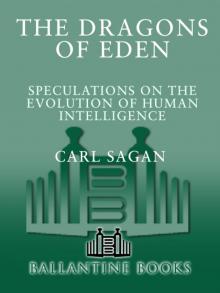 The Dragons of Eden
The Dragons of Eden